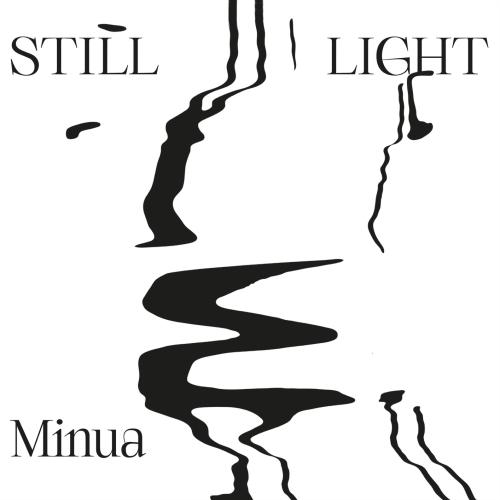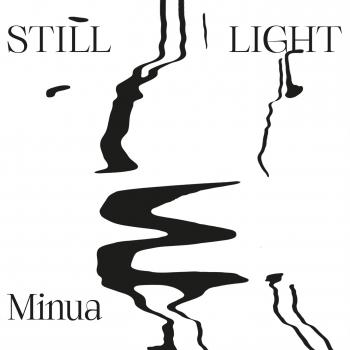
Still Light Minua
Album info
Album-Release:
2019
HRA-Release:
12.03.2019
Album including Album cover
- 1 And After 05:12
- 2 Waterlines 04:25
- 3 Alight 02:47
- 4 Parallel Overpass 04:31
- 5 Jumps 02:13
- 6 Murmuration 03:20
- 7 October II 05:33
- 8 Heluxia 03:49
- 9 Lumen 03:46
- 10 Climber (1985) 05:18
Info for Still Light
When Luca Aaron, Kristinn Kristinsson and Fabian Willmann played together for the first time in a rehearsal room of the Academy of Music Basel in 2014, they immediately felt a strong bond. “It was almost like salvation from the daily college-routine, to find people who also wanted to play something different,” Luca Aaron grins. The trio’s creative drive feeds on various influences. Some of them have inspired all members and others are more personal. To name the most important: post-rock, minimalism à la Steve Reich, Nordic melancholy and Scandinavian folk, as well as unusual tonal colors, created by extended playing techniques and well applied electronics.
In the poetic pieces on Still Light the aforementioned influences are sometimes subtly, sometimes more distinctly discernable. Listening to “Waterlines” you hear swelling guitar chords, lyrical bass clarinet and a romantic-epic aura reminiscent of Sigur Ròs, without celebrating their monumental emotionalism. Or the fascinating “Parallel Overpass”, in which flowing patterns, complex interlocking and rhythmic displacement clearly reference Steve Reich. “Jumps” pursues a similar direction while “Murmuration” contrasts the sometimes warm, sometimes bright timbre of the clarinet and almost creepy electronic-abstract sounds. The general outlines of the pieces each come from one of the three musicians, but are then always developed together. Over the course of the many live shows, older pieces have been subjected to metamorphoses again and again and are now interpreted in various ways by the band. For example “Lumen”, which originates from the trio’s beginnings and now made it onto the album in a different version that harmonizes best with the more recent compositions.
In the three years between the debut album and Still Light, the band was touring a lot. This also brought them to large rock stages in China, “where we step out of the chamber musical club context and unfurl post-rock facets and our full sound spectrum.” Meanwhile Aaron explores even more differentiated ways of electronic modulation and creates surprising sounds. No wonder then, that he names Christian Fennesz, Tim Hecker, Arve Henriksen and Skúli Sverrisson as his inspirations. Born in December 1994 near Freiburg and growing up there, Aaron played grunge and metal in his school days, before discovering jazz through the music of Mr. Bungle. Most recently he has been devoting himself to Scandinavian folk music, like Finnish Kantele music.
Kristinn Kristinsson was born in 1990 in Iceland and is certainly deeply rooted in the often-quoted traditions of his homeland. However, as the son of classical musicians, he is just as strongly influenced by European classical and modern music. At the age of five he began learning the cello and when he was 12 he turned to the guitar. Even if that might seem a little stereotyped, he is now responsible for many of Minua’s melancholic moments. Fabian Willmann also has a classical background. Born in 1992 in Freiburg, having lived in New York and now based in Basel, he has fathomed coherences between impressionism and jazz and has performed with projects of the SWR Sinfonieorchester [Southwest German Radio Symphony Orchestra]. Furthermore, the love for freedom of jazz music is inherent in him. Specially for Minua, the studied saxophonist delved deeply into the details of the bass clarinet, because its sound harmonizes better with the two guitars.
Minua’s music develops an Icelandic aura, not only on account of Kristinn Kristinsson. One of the first tours brought the trio to the volcanic island shrouded in myth. “We by no means only played in Reykjavik, but also in churches and community halls of smaller fishing towns,” Luca Aaron remembers, ”the landscape and atmosphere there was very inspiring for our sound aesthetic.” Furthermore, on Still Light there is a memory turned into sound of the mentioned China tour, namely the piece “Heluxia”. “On an off-day we hiked to a monastery and afterwards ended up in a tea house nearby,” Aaron tells. “The tea ceremony in itself was already an impressive moment. When the master of the ceremony spoke to our Chinese tour manager, the sound of their words and voices touched us deeply as musicians, even though we obviously didn’t understand anything.”
Luca Aaron and Kristinn Kristinsson now live in Berlin, but Minua’s sound deliberately stands out from the capital’s scene and its often fast, rhythmic, at times harsh sounds. Instead of playing with rapid cuts and staccatos, the band rather relies on textures and long installations. In this way Minua leaves ordinary boundaries of genre behind in favor of a decisively independent, international aesthetic.
P.S.: By the way, the cryptic album title, Still Light, refers to the little remainder of daylight after sunset and the minimal, calmly and slowly increasing light show that Minua have devised for their concerts.
Fabian Willmann, bass clarinet
Kristinn Kristinsson, guitar
Luca Aaron, guitar
Minua
music presents itself in constant alteration. Ranging from ambient drones, minimal patterns and free improv to more songbased structures, their style defies genre boundaries with a subtle blend of acoustic and electronic textures. With the unique instrumentation of two guitars and a bass clarinet the musicians act as one unit, dedicating themselves to the collective sound; one that evokes both out-of-focus imagery and low-key melancholia.
This album contains no booklet.










